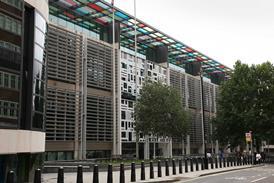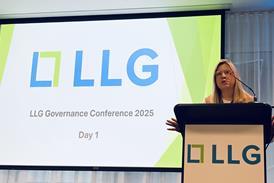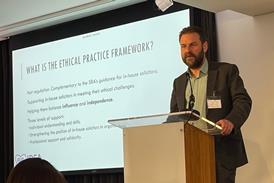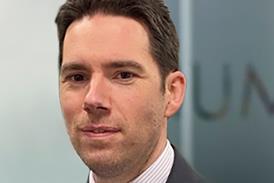The low down
Profits are up at personal injury and clinical negligence practices, which has attracted the attention of private equity investors. So is all ‘well’, with the legal market providing the access to justice injured claimants need? If only. The Law Society identifies more ‘justice gaps’ opening up. Claims are falling, even in areas where injuries are increasing. The punitive costs regime is playing a part. Claims with merit are simply uneconomic to run. Mazur has forced firms to rethink their business model. Then there is the ever-present prospect of government bringing in reforms aimed at further reducing claims. And is private equity investment all good? PE’s focus on results may drive early settlements that leave clients short of full restitution.
The personal injury (PI) and clinical negligence (CN) sectors of the legal market are returning to modest growth. External funding is driving consolidation and boosting profits for commoditised and specialist personal injury firms. Yet there are serious concerns that legislative and policy changes have opened up justice gaps, whereby claimants find it challenging to access legal representation and obtain compensation.
Adapting to change
Claimant firms in particular have adapted their operations in response to those legislative and policy changes. Now, for the first time in several years, profits are up and forecasts are cautiously positive. IRN Legal Reports’ briefing on the UK Personal Injury Market 2025 valued the market at £4.4bn in 2024, an increase of 2.3% on the previous year. The report predicted the market would grow by 4.5% in 2025 to £4.59bn, and by 5.4%, 5.8% and 6.2% in the following three years, to reach a value of over £5.4bn by 2028.
This optimism is reflected in the financial results of firms at both ends of the PI claims market. Stewarts Law LLP, which handles high-value specialist claims, and Carpenters, which takes on more volume claims than any other firm, have reported significant increases in profit, turnover and partner remuneration.
However, claims numbers are falling. PI claims registered at the Department for Work and Pensions’ Compensation Recovery Unit (CRU) fell for the sixth consecutive year, from 876,000 in 2018 to 447,973 in 2024, while total settlements dropped to just over 508,000 in 2024/25 from nearly 549,000 in the previous year. A high proportion of cases are dropped or settled, although the number of PI claims going to court, which had been declining since 2017, increased slightly in 2024 to 62,100.
Road Traffic Accident (RTA) claims, which represent around 70% of the PI market, fell from 667,000 in 2018 to 328,637 in 2024. They hit a record low in the third quarter of 2025 with just 72,000 applications, down 9% on the equivalent period in 2024, and 56% below pre-pandemic (2019) levels. This downward trend is expected to continue.
Unsurprisingly, the Association of Personal Injury Lawyers (APIL) confirmed that RTA claims have fallen significantly since the introduction of whiplash reforms in 2021 – despite a rise in road casualties.
Claims in other areas are also declining. APIL reports that, between 2018 and 2023, CN claims reduced from 17,400 to 14,900 and employer-related claims halved, falling from 88,000 to 44,000. In the third quarter of 2025, 2,236 employer liability (EL) claims were registered (44% below pre-pandemic levels); there were 15,909 public liability claims (18% below pre-pandemic levels); and 3,636 clinical negligence claims (9% below pre-pandemic levels).
Falling claims figures indicate that the current compensation regime is opening up justice gaps, where victims are not seeking restitution.
Mike Benner, APIL chief executive, says: ‘Injured people’s rights have been eroded over the past 15 years due to a succession of poor policy decisions, to the point where the principle of full and fair compensation has been totally undermined. We’re now seeing dramatically reduced claims volumes in some areas, despite no evidence of fewer injuries. This indicates that a ‘justice gap’ has emerged wherein injured people are not getting the redress to which they should be entitled.’
This is particularly evident in RTA and EL claims. In 2024, the number of people injured in road crashes increased by 11%, while the number of motor injury claims dropped 34%. Fixed costs are a key factor.
Benner explains: ‘The amount of money which can be recovered can be less than the cost of running cases properly. Asking injured claimants to cover the shortfall can deter injured workers from taking the claim further, especially when balanced with the fear of losing their jobs.’
He believes the problem of insufficient costs is only going to get worse as more and more cases become unviable to run. ‘Fixed costs have failed to keep pace with inflation,’ he points out. ‘At the moment, to take inflation into account, fixed costs in the portal would need to be uprated by 38%. We are left with a totally unsatisfactory situation where there is a significant barrier to justice for victims of negligence.’
Benner also references the impact of the discount rate change on compensation achieved for catastrophic injuries, which changed from -0.25% to 0.5% in January this year. ‘There is a greater financial strain on injured claimants as a result of the discount rate change,’ he notes. That is because they ‘may now have to take greater risks with their investments to try to achieve an adequate level of compensation to meet their needs. The true impact and how many victims are being undercompensated is not yet known, as their needs are usually lifelong and ongoing’.
Isabel Bathurst, consultant lawyer at Scott-Moncrieff & Associates, specialises in CN and catastrophic injury claims. She observes that the problem is also evidenced by the fact that the Official Injury Claim portal, which was set up in 2021 for lower-value RTA claims, is handling significantly fewer claims year on year.

Law Society president Mark Evans elaborates: ‘The complexity of the OIC portal, low tariffs and restrictions on recovering legal costs have made justice an uphill struggle for many claimants. Despite the government’s position that the OIC portal was designed for both unrepresented claimants and professional users, claimants have been represented in nearly 90% of claims since the portal was launched.’
Unrepresented claimants, Evans adds, most commonly choose to exit the claims process because of complex issues of law or fact: ‘With legal costs not recoverable, claimants are faced with a difficult choice between going it alone on an uneven playing field, bearing the costs of representation themselves, or withdrawing from the process altogether.’
James Maxey, chief executive officer at Manchester and London firm Express Solicitors, agrees. ‘The OIC portal for RTA has completely achieved the insurers’ aims in that it has removed the vast majority of those claims from the marketplace. We never expected it to work to fairly compensate claimants, and it hasn’t.’
He adds: ‘In terms of the RTA portal, it’s obviously not worth the level of compensation for the hassle. The lawyers in the main have been put off from handling the work, certainly for an individual claimant.’
Elizabeth Wallace, a partner at Weightmans who specialises in complex and high-value claims, confirms that defendant firms that represent the insurers are indeed seeing fewer lower-value claims, but this is balanced by an uptick in complex and large loss claims, as well as a rise in claims for secondary injuries. She agrees that the reduced financial incentive to pursue lower-value claims is shifting the market towards non-injury work.
Another trend that is affecting the sector is that fewer cases are decided in court. ‘The costs and other disincentives for parties to go to trial do impact behaviours,’ says Wallace. ‘There’s a more collaborative approach, particularly in the large loss space. And thinking about the shift in workload from lower-value claims to higher-value claims, part of our job is to predict what the judge is going to decide. We are quite good at that, although there are always outliers.’
However, as Bathurst observes, the fact that cases are not getting to court because they are being settled through alternative dispute resolution (ADR) means that they are not automatically reported. That means they are not getting visibility or public scrutiny.
‘When you get a court order, the first thing it says is that you get lambasted on costs if you haven’t considered mediation,’ Bathurst says. ‘Obviously, the purpose of a claim is to seek compensation, but a claimant shouldn’t be penalised for deciding to go to court. As a solicitor, I work with my client on the best approach to their case, to determine whether or not it should settle or proceed through the court process. It is a huge justice gap and it means that fewer cases are in the media.’
The decline in conditional fee agreements (CFAs), marketed under the ‘no win, no fee’ strapline, is another barrier to individuals claiming compensation, says Bathurst. ‘Clients don’t pay unless they win, but for firms to make a profit from these cases they need to be able to charge a shortfall, and with lower-value cases, the amounts of money [awarded] become more critical both to the claimants and to the law firm’s potential profit margin.’
That is why fewer firms are offering CFAs. ‘For larger firms, it may be possible as a loss leader and sometimes what may look like a straightforward damages portal case becomes a higher-value case, which is the kind of case I focus on,’ she explains.
‘As firms become increasingly commercial and conduct risk assessments before choosing which cases to take on, people with valid claims are turned away. In response to a Law Commission review on conditional fee agreements, two law firm owners said that they turned away even high-value claims if they didn’t get disbursement funding.’
So, more claimants struggle to find lawyers to represent them and fewer firms are accepting even higher-value claims. As Bathurst puts it: ‘There’s a huge justice gap, created by a number of different factors. But because PI is a large and thriving market, we’re not seeing an overall impact on the industry, but rather the impact on individuals and smaller law practices, some of whom are selling up and fuelling further consolidation.’
Although legal expenses insurance can be helpful, she adds, claimants are generally directed to a panel of lawyers. Again, ‘a limited number of firms are handling the majority of the work and claimants can’t necessarily choose their solicitor, which should be a fundamental right’.
Next year’s models
Two significant factors are changing the business model for claimant and defendant PI firms. The first is the Mazur decision, which is preventing commoditised firms from deskilling litigation processes. The second is technology, which is automating routine processes and accelerating cases. But GenAI also raises new challenges around combating fraud.
The judgment in Julia Mazur & Ors v Charles Russell Speechlys LLP [2025] EWHC 2341 (KB) stipulates that only an authorised person can conduct litigation. While pre-litigation processes can be handled by staff who are not solicitors, issuing proceedings and running cases are reserved legal activities.
Apparently unrelated to Mazur is a recent decision by Irwin Mitchell, which according to NHS Resolution handled the largest market share (13.5%) of clinical negligence claims in 2023/24, to remove the litigation assistant role.
Technology is supporting claimant and defendant firms, automating client onboarding and case management. GenAI software that analyses medical records is accelerating resolution for cases involving fixed recoverable costs.
Jonathan Wheeler, managing partner at Bolt Burdon Kemp, says: ‘For lower-value cases, automation is key. AI tools are already shrinking the time taken to prepare chronologies, summarise bundles and draft documents which would have taken a real person ages, thereby freeing lawyers’ time for the valuable work of supporting their clients and advocating on their behalf.’
On the defendant side, staying on top of tech is a perennial challenge. Weightmans partner Elizabeth Wallace highlights the dangers of ‘AI fraud’. A priority is ‘making sure that we have the tools to spot deep fakes, which range from AI-generated receipts and images, to support our insurer clients’, she says.
But as Express Solicitors CEO James Maxey observes: ‘Only the bigger and better-funded firms will be able to focus on AI or other technological improvements. Even in terms of being able to have a marketing budget to cut through on Google, one needs to be of a fair size. [That’s] an advantage nowadays.’
Market consolidation
‘The personal injury market has consolidated over recent years, with fewer firms practising in the area and less business being generated,’ the Law Society’s Evans notes. ‘Since 2022, the number of firms in the personal injury practice area has declined by more than 20%.’
A key factor here is merger and acquisition (M&A) activity. Recent months have seen increased private equity (PE) ownership of personal injury firms, Jeff Zindani of Acquira Professional Services notes. ‘Consolidation is now the defining structural trend within personal injury and clinical negligence. The rise of well-resourced PE-backed PI platforms has changed the scale and tempo of activity across the sector.’
Acquira’s data indicates that PI firms are increasingly attractive to international PE houses, and PE investment is helping to fund firms’ ‘buy to build’ strategy.
For example, in 2025 Fletchers Group, which was acquired by US-headquartered Sun Capital four years ago, acquired Scott Rees & Co Solicitors (97 staff), lead generators Claims.co.uk, the clinical negligence business of Sheldon Davidson Solicitors and Shoosmiths’ serious injury practice (80 staff including eight partners). It is now looking to expand into other legal practice areas. In other M&A activity, Express Solicitors acquired HNK Solicitors and Graham Coffey & Co, and recently sold a majority stake in Express to Swiss private equity firm Ufenau Capital Partners.
While regulatory reforms are part of the drive for consolidation, as Maxey observes, the current focus is on post-implementation review. ‘We keep a careful eye on regulatory reform and the PI market generally,’ he says. ‘Obviously, this was important in our recent deal with UCP and ultimately both they and we took the view that most of the regulatory change which had been having a negative effect on the claimant personal injury marketplace has probably been concluded. We don’t see appetite among politicians to bring in further sweeping change at this point.’
Size, image and purpose
While consolidation is mostly about leveraging economies of scale, it is also about market control. The top 20 PI firms now handle over 50% of all claims involving legal representation registered at the CRU.
This is combined with a sharp focus on marketing and efforts to shift the public perception of PI lawyers, facilitated by the fact that fewer cases are litigated and therefore reported.
Zindani observes that this could be interpreted as a strategy to control marketing/communications channels too. Fletchers acquired digital marketing agency Blume and recently commissioned a report highlighting the socio-economic value of its work.
Smaller firms are joining marketing networks and claims management companies to boost their visibility and market positioning. However, as the larger firms raise equity to acquire the competition, they have become highly leveraged. This raises questions around their strategic direction in the medium to long term. Clearly, the focus is market dominance, as the larger they grow, the greater their nominal value.
However, there is a limited number of potential acquirers for this type of business. As Zindani explains, if firms are too highly leveraged, their owners will struggle to sell them on.
As claimant firms join PE-owned platforms, there are cultural implications too. A more target-driven environment can affect the workplace. But as Zindani observes, this is not just about the workplace; it can also affect outcomes if claims are settled faster in order to meet targets, potentially for lower compensation.
At the other end of the scale, specialist boutique firms, particularly representing claimants in medical negligence/catastrophic injury cases, are thriving.
Jonathan Wheeler, managing partner at Bolt Burdon Kemp, relates: ‘The number of law firms acting for claimants has reduced by a third since 2016. Those firms now missing from the market have either failed, merged, or just stopped doing the work. But if you’re at the top of the tree, specialising in serious injury cases over £100,000 or those which don’t fall into any of the fixed costs regimes, the market is more buoyant. There is space for boutique firms like mine, which are highly specialised and very much in tune with what their clients are looking for in terms of the service they provide and the time which they can devote to the work.’
Nevertheless, Wheeler says, ‘firms with PE-backing continue to prowl and we’ll likely keep seeing levels of consolidation’. Zindani adds: ‘Boutiques remain attractive [acquisition] targets due to strong margins, specialist capability and referral-driven new business.’
Regulatory developments that will continue to shape the sector may include further PI discount rate changes, whiplash tariff updates, Civil Procedure Rule (CPR) amendments, more ADR and litigation funding reform.
Politics matters too, adds Wheeler: ‘Politically, in the low-value injury space, the MoJ is calling for evidence as to the working of the whiplash tariff and fixed fee schemes. Meanwhile, the Public Accounts Committee is deliberating the rising cost of claims against the NHS.’
The message from the claimant sector on that is clear, Wheeler says: ‘The NHS only pays out damages and costs to claimants when it has got things wrong. In order to limit its expenditure, it needs to get its house in order, stop being negligent and start learning from its mistakes.’
Bathurst is concerned that while the PI sector has turned a corner, financial success masks underlying difficulties. ‘I think that success within the industry distorts the fact that there’s a problem. Is the focus on profitability, or is it on access to justice in relation to claimants having the right advice across the board, regardless of the value of their claim? I’m not sure the focus is on the right people. I understand that in order to offer the service, it’s got to be done on a commercial basis, but surely commerciality would follow if it focused on the individuals who require legal services. Then there wouldn’t be people who are unable to access those services just to ensure that we’re all profitable as solicitors.’
Looking to the future, while Express Solicitors is focused on growth, Maxey says it endeavours to remain true to its core purpose. ‘We definitely agree there has been a focus on high-value work, including high-value clinical negligence, as that area has been least affected by fee changes and legislation,’ he says. ‘But we’re determined to continue representing the ordinary injured person or the person who has suffered a more run-of-the-mill injury. These injuries still have a big negative impact on people and they need legal representation to navigate the medical evidence and the law, and so our model is very much across the spectrum of injury, including the catastrophic injury work.’
Zindani identifies ‘scale, capital and technology as the defining competitive advantages’ in the PI sector. ‘Firms must make conscious decisions about their future position: whether to invest, specialise, merge or exit,’ he advises. Notwithstanding this wise strategic perspective, PI justice gaps remain a cause for concern for claimants and their representatives.
Joanna Goodman is a freelance journalist
































No comments yet